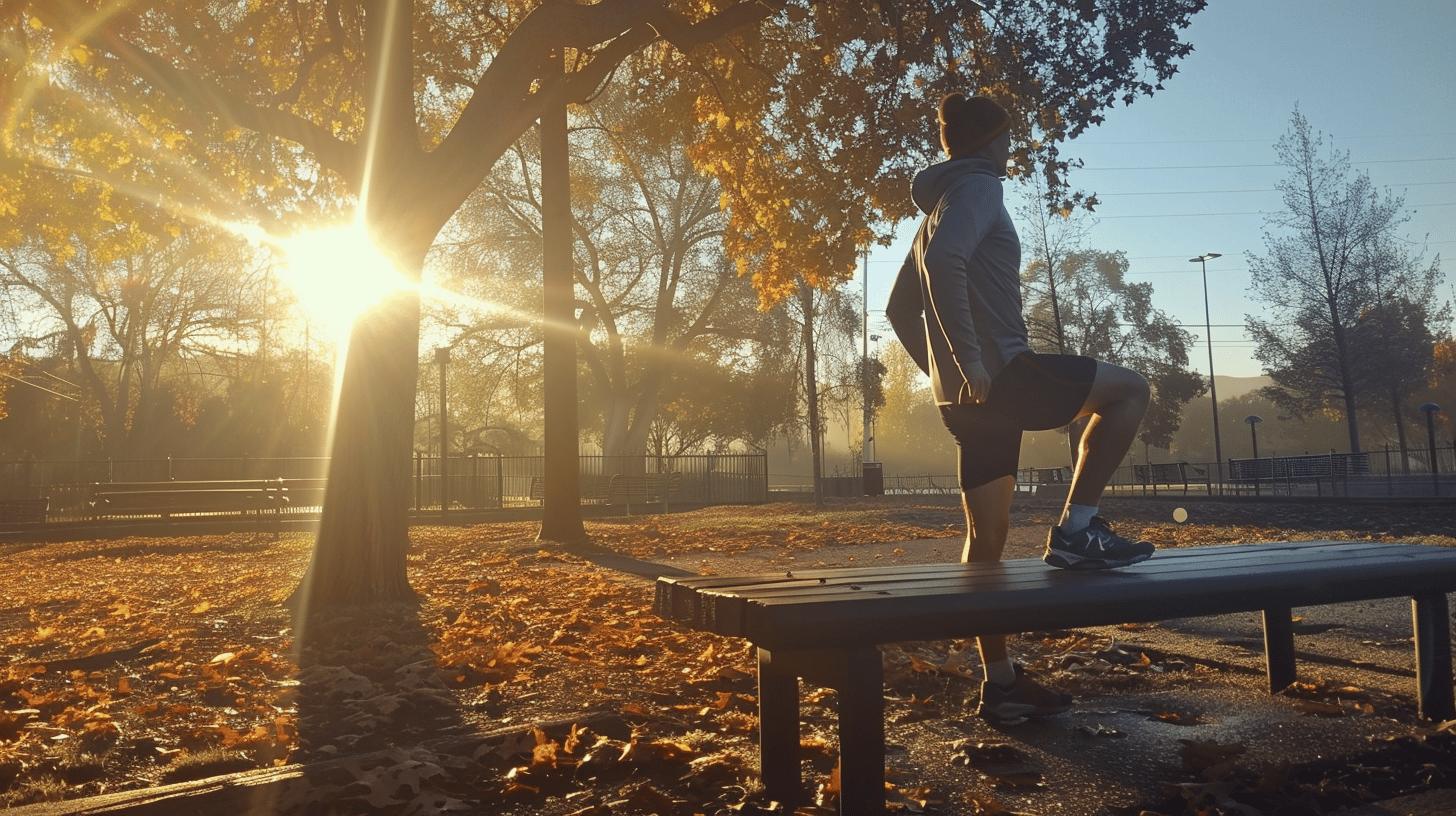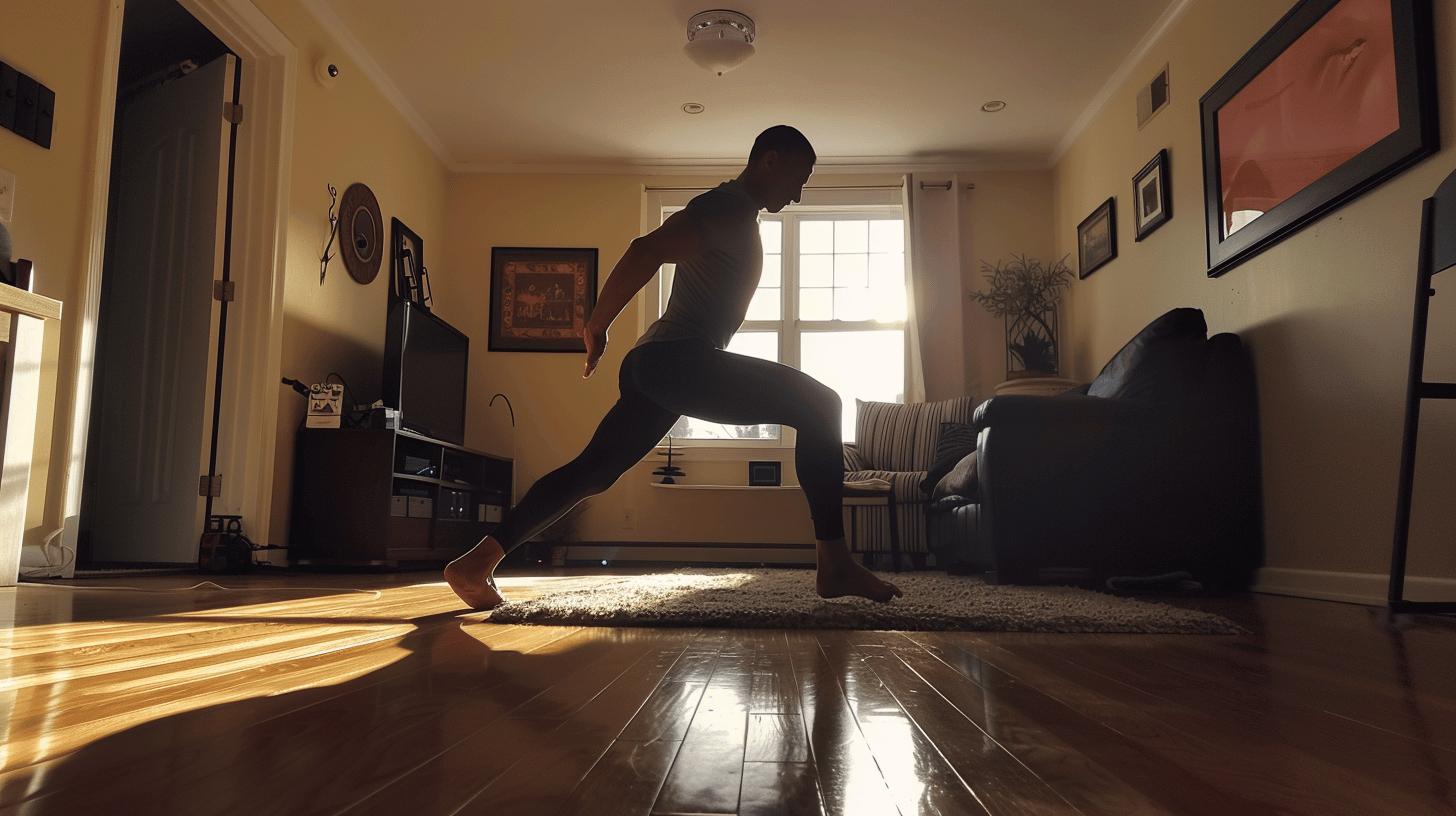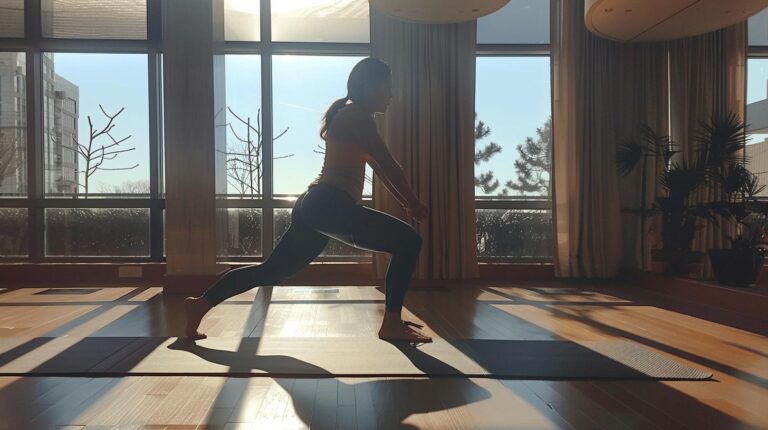Are weak knees holding you back from reaching your running goals? Many people assume that knee pain is an inevitable part of running, but strengthening specific muscles can make all the difference. This article dives into practical methods for fortifying your knees, so you can run longer, faster, and injury-free. From understanding the key muscles involved to implementing the best exercises, you'll get the knowledge needed for maintaining knee health. Read on to discover how to build stronger knees for your most successful running yet.
Key Muscles Involved in Knee Strengthening for Running
Muscle strength is crucial for knee stability, especially for runners. Strong muscles around the knee joint help to absorb impact, maintain proper alignment, and reduce the risk of injury. These muscles include the quadriceps, hamstrings, glutes medius, and glutes maximus. Engaging in knee ligament strengthening exercises is essential for runners aiming to improve performance and prevent knee-related issues.
The quadriceps, located at the front of the thigh, play a significant role in knee extension and stability. Hamstrings, situated at the back of the thigh, assist in knee flexion and work harmoniously with the quadriceps to stabilize the knee joint. The glutes medius and glutes maximus, found in the buttocks, are vital for hip stability and knee alignment. Strengthening these muscle groups through targeted knee joint strengthening exercises can enhance knee function and reduce the likelihood of injuries.
- Improved knee stability: Strengthening the quadriceps and hamstrings helps stabilize the knee joint.
- Enhanced shock absorption: Strong glutes medius and glutes maximus improve the body's ability to absorb running impact.
- Better alignment: Balanced muscle strength ensures proper knee alignment during running.
- Reduced injury risk: Robust knee muscles decrease the likelihood of sprains and strains.
- Increased performance: Strengthened knee muscles contribute to more efficient and powerful running.
These muscles work in concert to support knee health during running. Quadriceps and hamstrings provide stability, while the glutes medius and glutes maximus ensure proper alignment and shock absorption. By focusing on knee ligament strengthening exercises, runners can achieve improved knee stability, reduced injury risk, and enhanced overall running performance.
Best Knee Strengthening Exercises for Runners
Strengthening knee muscles is critical for runners to enhance performance and prevent injuries. Incorporating targeted exercises into a weekly routine helps improve knee stability, absorb impact, and maintain proper alignment. This section highlights effective and essential knee exercises designed to fortify the muscles supporting the knee joint.
- Wall Sit: A static exercise that strengthens the quadriceps by holding a seated position against a wall.
- Standing Hamstring Stretch: Stretches and strengthens the hamstrings, promoting flexibility and knee stability.
- Standing Quad Stretch: Targets the quadriceps, enhancing flexibility and reducing the risk of injury.
- Single Leg Glute Bridge: Focuses on the glutes and hamstrings, improving hip and knee stability.
- Step-Up with Knee Drive: Engages the quadriceps and glutes, enhancing knee strength and balance.
- Sitting Leg Raises: Strengthens the quadriceps and hip flexors, supporting knee extension.
- Single-Leg Box Step-Down: Targets the quadriceps and glutes, improving balance and knee control.
- Forward Lunge: Engages the quadriceps, hamstrings, and glutes, promoting knee stability and coordination.
- Lying Hamstring Curl with Dumbbell: Strengthens the hamstrings, reducing knee strain and enhancing stability.
- Clamshells: Focuses on the glutes medius, improving hip stability and knee alignment.
| Exercise | Target Muscles |
|---|---|
| Wall Sit | Quadriceps |
| Standing Hamstring Stretch | Hamstrings |
| Standing Quad Stretch | Quadriceps |
| Single Leg Glute Bridge | Glutes, Hamstrings |
| Step-Up with Knee Drive | Quadriceps, Glutes |
| Sitting Leg Raises | Quadriceps, Hip Flexors |
| Single-Leg Box Step-Down | Quadriceps, Glutes |
| Forward Lunge | Quadriceps, Hamstrings, Glutes |
| Lying Hamstring Curl with Dumbbell | Hamstrings |
| Clamshells | Glutes Medius |
Incorporating these exercises into a regular fitness routine can lead to significant improvements in knee strength, stability, and overall running performance. Strengthened knee muscles not only reduce the risk of injury but also enhance the body's ability to absorb impact during runs. Consistent practice of these exercises ensures balanced muscle development, leading to better knee alignment and more efficient running mechanics.
Preventing Knee Injuries While Running

Common causes of knee injuries in runners include sudden increases in training intensity, overtraining, and using worn-out shoes. Running on uneven surfaces can also lead to knee strain. Runner's knee, characterized by pain at the front of the knee around the patella, is a frequent issue that arises from these factors. Understanding these causes is essential to formulate strategies to avoid knee injuries.
Proper running technique is crucial in preventing knee injuries. How can running technique help avoid knee injuries? By improving running efficiency and distributing impact forces more evenly across the legs. Proper posture, such as keeping the torso upright and avoiding overstriding, minimizes stress on the knees. Efficient running mechanics not only protect the knees but also enhance overall performance.
Pre-run routines should include a robust warm-up and mild stretches to prepare the knees for the demands of running. How long should you warm up before running? A warm-up of 10-15 minutes is recommended. This period allows the muscles and joints to become more flexible and responsive. Dynamic stretches, such as leg swings and walking lunges, are particularly effective in reducing stiffness and improving range of motion.
| Tip | Description |
|---|---|
| Proper Running Technique | Maintain an upright posture and avoid overstriding to reduce knee stress. |
| Warm-Up | Engage in a 10-15 minute dynamic warm-up to prepare muscles and joints. |
| Stretching | Incorporate mild stretches to enhance flexibility and reduce stiffness. |
| Cross-Training | Use activities like walking, cycling, and swimming to reduce knee stress. |
| Proper Footwear | Wear shoes with adequate support and replace them regularly to prevent injury. |
Cross-training and proper footwear are also vital in preventing knee injuries. How can cross-training benefit runners? Activities like walking, cycling, and swimming reduce knee stress by varying the types of physical exertion. Cross-training helps maintain overall fitness while allowing the knees to recover from the repetitive impact of running. Additionally, wearing shoes with adequate support and replacing them regularly ensures that the knees are protected from excessive strain.
Advanced Knee Strengthening Exercises for Runners
For runners who have mastered basic knee strengthening routines, progressing to advanced exercises is essential for continued improvement. Advanced exercises build on the foundation of load-free movements like clamshells or bridges, targeting deeper muscle activation and stability. These exercises are critical for enhancing knee strength, particularly for challenging running scenarios such as downhill and uphill running. Advanced knee exercises for runners ensure that the knee joints can withstand the increased demands and varied terrains encountered during long-distance runs or high-intensity training.
- Single-Leg Hip Bridge: This exercise targets the glutes and hamstrings while enhancing pelvic stability. Begin by lying on your back with one leg bent and the other extended. Lift your hips off the ground by pressing through the heel of the bent leg.
- Physio Ball Squats: Using a stability ball placed between your lower back and a wall, perform squats to engage the quadriceps, hamstrings, and glutes. This exercise improves balance and core strength.
- VMO Activation Exercises: These focus on the vastus medialis oblique (VMO), a part of the quadriceps critical for knee stability. Perform step-downs or terminal knee extensions to activate this muscle.
- Bulgarian Split Squats: With one foot elevated behind you on a bench and the other foot forward, lower your body into a squat. This unilateral exercise targets the quadriceps, hamstrings, and glutes while enhancing balance.
- Plyometric Lunges: Engage in explosive lunges to improve power and coordination. These lunges involve jumping from one lunge position to another, focusing on the quadriceps, hamstrings, and glutes.
| Exercise | Advanced Benefits |
|---|---|
| Single-Leg Hip Bridge | Enhances pelvic stability, targets glutes and hamstrings |
| Physio Ball Squats | Improves balance, engages quadriceps, hamstrings, and glutes |
| VMO Activation Exercises | Stabilizes knee, targets the vastus medialis oblique |
| Bulgarian Split Squats | Enhances balance, strengthens quadriceps, hamstrings, and glutes |
| Plyometric Lunges | Improves power, coordination, and targets key leg muscles |
These advanced exercises can significantly benefit runners in specific scenarios, such as downhill and uphill running. How do these exercises help with downhill running? By strengthening the quadriceps and improving control, they help manage the increased impact forces experienced when running downhill. For uphill running, how do these exercises assist? They enhance the power and endurance of the hamstrings and glutes, enabling runners to maintain speed and efficiency. Incorporating these advanced knee strengthening workouts into a training regimen ensures that runners are well-prepared for varied terrains and can sustain high performance while reducing the risk of injury.
Home Knee Strengthening Exercises
Home exercises for knee strength offer numerous advantages, particularly for runners. They provide the convenience of exercising without the need for gym equipment or memberships. How effective are home exercises compared to gym workouts? With proper form and consistency, home exercises can be just as effective as those performed in a gym. Strengthening knee muscles at home helps improve stability, reduce injury risk, and enhance running performance.
- Banded Sidewalk (Crab Walk): Place a resistance band around your thighs, just above your knees. Bend your knees slightly and take side steps, maintaining tension in the band. This exercise targets the glutes and hip stabilizers.
- Jane Fonda Exercise: Lie on your side with your legs stacked. Lift the top leg while keeping it straight. This exercise focuses on the glutes medius and helps improve hip stability.
- Single-Leg Hip Bridges: Lie on your back with one leg bent and the other extended. Lift your hips by pressing through the heel of the bent leg. This move engages the glutes and hamstrings.
- Quad Stretch: Stand on one leg, pulling the other foot towards your buttocks. Hold the stretch for 30 seconds. This exercise increases flexibility in the quadriceps.
- Hip Flexor Stretch: Kneel on one knee with the other foot in front. Push your hips forward gently to stretch the hip flexors. Hold for 30 seconds and switch sides.
Consistency and proper technique are vital for achieving the desired results from home knee exercises. How important is consistency in knee strengthening? Regular exercise ensures that muscles are continually challenged and strengthened, leading to better stability and reduced injury risk. Maintaining proper form during each exercise maximizes effectiveness and prevents strain or injury.
Creating a home workout routine that includes these exercises can be straightforward. Start with a warm-up to prepare the muscles and joints for activity. Perform each exercise for the recommended repetitions and hold stretches for the specified duration. Gradually increase the intensity and duration as your strength improves. Scheduling workouts at regular intervals, such as three to four times a week, ensures consistent progress and optimal knee health for running success.
Physiotherapy Exercises for Knee Pain Relief

Physiotherapy plays a crucial role in managing and reducing knee pain, particularly for runners. Regular physiotherapy exercises can strengthen the muscles around the knee, improve flexibility, and enhance joint stability. These exercises are designed to target specific areas of muscle weakness and imbalance, providing relief from pain and preventing further injury. Incorporating physiotherapy into a running routine ensures that knee pain is effectively managed, allowing for uninterrupted training and improved performance.
- Physio Ball Squats: Place a stability ball between your lower back and a wall. Perform squats to engage the quadriceps, hamstrings, and glutes, enhancing knee stability and reducing pain.
- VMO Activation Exercises: Focus on the vastus medialis oblique (VMO) muscle by performing step-downs or terminal knee extensions. These exercises improve knee alignment and support.
- Quad Stretches: Stand on one leg and pull the other foot towards your buttocks, holding for 30 seconds. This stretch increases quadriceps flexibility and reduces knee tension.
- Hamstring Curls: Lie on your stomach and curl your legs towards your buttocks using a resistance band. This exercise strengthens the hamstrings, improving knee support.
- Clamshells: Lie on your side with your knees bent. Raise your top knee while keeping your feet together. This exercise targets the glutes medius, enhancing hip stability and knee alignment.
Consistency and proper technique are vital for the effectiveness of physiotherapy exercises. Regularly performing these exercises ensures that the muscles supporting the knee are continually strengthened and conditioned, reducing pain and preventing injury. How important is consistency in relieving knee pain? Consistency allows for gradual improvement in muscle strength and flexibility, leading to sustained pain relief. Ensuring proper form during each exercise maximizes their benefits and minimizes the risk of further injury.
Final Words
Strengthening the knees for running begins with understanding key muscle groups like the quadriceps, hamstrings, and glutes. Incorporating targeted exercises such as wall sits, step-ups, and hamstring curls can enhance knee stability and reduce injury risk. Proper running techniques, combined with pre-run stretches, are crucial in preventing knee injuries. Advanced exercises provide an additional edge in building knee strength for demanding running scenarios. Home and physiotherapy exercises offer accessible solutions for ongoing knee health. With consistent practice, runners can significantly fortify their knees and improve performance.
FAQ
How do I make my knees stronger for running?
Strengthening key muscles like quadriceps, hamstrings, glutes medius, and glutes maximus improves knee stability and reduces injury risk. Exercises such as lunges, leg raises, and squats help build these muscles.
Can weak knees be strengthened?
Yes, weak knees can be strengthened with targeted exercises. Incorporating knee-strengthening routines, including exercises like wall sits and hamstring curls, enhances muscle strength and improves knee stability.
How do runners keep their knees healthy?
Runners maintain knee health by implementing proper running techniques, engaging in regular strength training exercises, performing pre-run warm-ups, and wearing appropriate footwear to reduce knee strain.
Do knees get stronger the more you run?
Running does not inherently make knees stronger. Strengthening exercises targeting the muscles supporting the knee joint are crucial to improving knee strength and stability when running.
How to strengthen knees for running?
Incorporate exercises such as wall sits, standing quad stretches, single-leg glute bridges, and forward lunges into your routine. These exercises target key muscles around the knee for enhanced stability.
What are effective knee strengthening exercises at home?
Effective at-home exercises include banded sidewalk, Jane Fonda exercise, single-leg hip bridges, and quad stretches. Consistent practice using proper form is essential for strengthening knees without equipment.
Which knee strengthening exercises are best for runners?
Top exercises for runners include wall sits, clamshells, step-ups with knee drives, and forward lunges. These exercises target the quadriceps, hamstrings, and glutes, enhancing knee stability and reducing injury risk.
How to strengthen knee ligaments?
Strengthening knee ligaments involves exercises like single-leg squats, step-downs, and VMO activation drills. These exercises increase ligament flexibility and support, enhancing overall knee joint stability.
What physiotherapy exercises help with knee pain?
Effective physiotherapy exercises include physio ball squats, VMO activation exercises, quad stretches, hamstring curls, and leg raises. Consistently performing these exercises can help manage and relieve knee pain.

